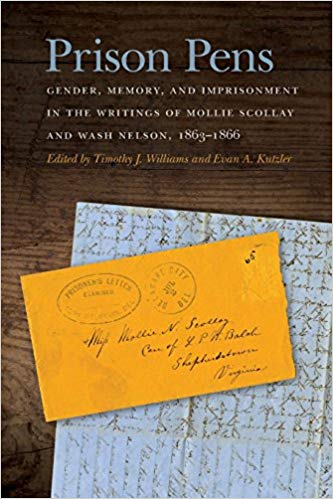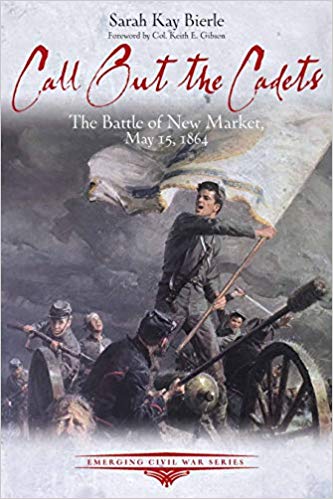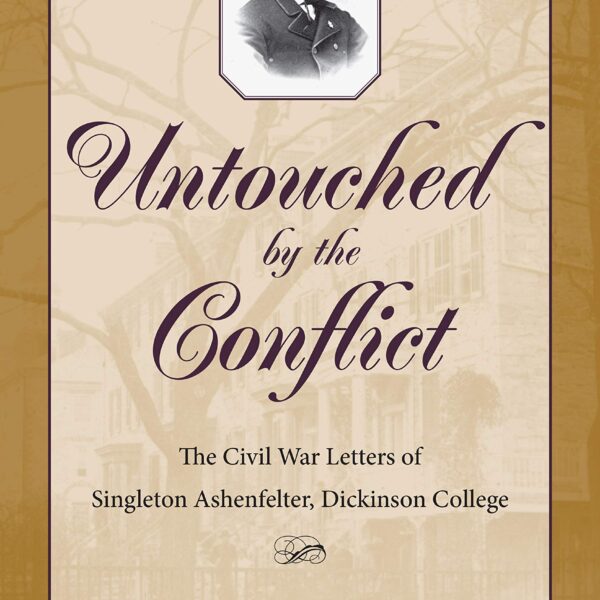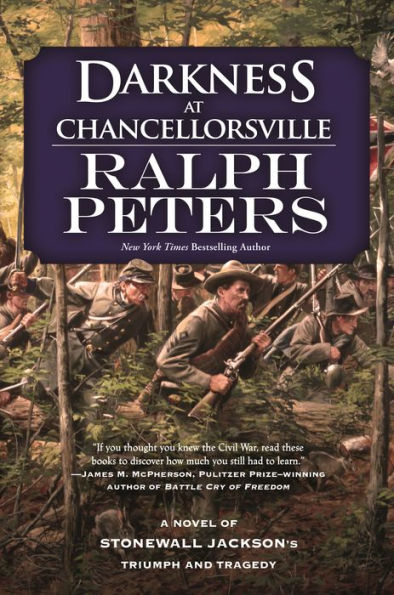An Agrarian Republic: Farming, Antislavery Politics, and Nature Parks in the Civil War Era by Adam Wesley Dean. University of North Carolina Press, 2015. Paper, ISBN: 978-1469619910. $29.95.
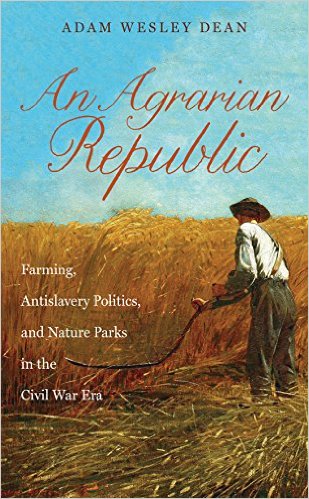 Adam Wesley Dean argues that Civil War scholars have forgotten the North’s small farmers and, as a result, have failed to appreciate their vital role in shaping the region’s antislavery sentiments. The old “clash of cultures” trope—a mechanized, urbanized Union versus plantationized Confederacy—may be true in the abstract, he writes, but it obscures the fact that most northerners lived in a “fundamentally agrarian” world, and that industrialism was not the main concern of the Republican Party until the approach of the Gilded Age (2). This is no small oversight, because “the relationship northerners had with the environment helped produce the ideology they brought to the political, social, and military conflicts of the Civil War era” (4). In short, Dean aims to counter what he sees as an ahistorical focus on a northern factory mindset by putting the soil back into Free Soil.
Adam Wesley Dean argues that Civil War scholars have forgotten the North’s small farmers and, as a result, have failed to appreciate their vital role in shaping the region’s antislavery sentiments. The old “clash of cultures” trope—a mechanized, urbanized Union versus plantationized Confederacy—may be true in the abstract, he writes, but it obscures the fact that most northerners lived in a “fundamentally agrarian” world, and that industrialism was not the main concern of the Republican Party until the approach of the Gilded Age (2). This is no small oversight, because “the relationship northerners had with the environment helped produce the ideology they brought to the political, social, and military conflicts of the Civil War era” (4). In short, Dean aims to counter what he sees as an ahistorical focus on a northern factory mindset by putting the soil back into Free Soil.
Antislavery northerners believed that small farms in the northern style—linked to cities and markets by good transportation networks, carefully tended, and passed from generation to generation—produced a corresponding social order marked by political freedom, economic initiative, vigorous but deliberate growth, and a strong sense of community and citizenship. Plantation agriculture, conversely, encouraged not only slave labor and massive political and economic inequality, but also colossal ecological damage: deforestation, erosion, and formerly fertile fields abandoned to pines and scrub. The union, and its western territories in particular, could not abide such a system forever, northerners like George Julian, Samuel Pomeroy, and Frederick Law Olmsted argued, because it literally destroyed the soil in which democracy grew. For them, the fate of nature and the fate of humans were linked; exploited land produced exploited people. Thus, railroads and the Homestead Act were of supreme importance because they directly facilitated the spread of small farming into the West. In modern terms, antislavery northerners were advocating a nineteenth-century version of socially conscious sustainable agriculture—their white-supremacy sentiments and capitalist orientation notwithstanding—as an alternative to the South’s anti-democratic and environmentally benighted “Big Ag.” This foreshadowed the importance that the conservation ethic would play in the Progressive-era Republican Party.
Some proponents like Olmsted went further by arguing for the creation of national parks, as well. Scenic wonders like Yosemite Valley, they claimed, “civilized” observers and reinforced their farm-raised values, showing the world in the process that republican societies could thrive even in the midst of civil war (109). Not every northerner agreed. Some argued that places like Yosemite were better used by opening them up to small farmers (if yeomanry was the crucible of democracy, why not give it as much land as possible?) and they battled mightily with park proponents before the latter emerged more or less victorious. Here again we see Progressive-era Republican conservation emerging, this time alongside a proto anti-environmental economic utilitarianism that would be a GOP hallmark in the twentieth century’s second half.
After the war, northern agrarian ideals underlay the efforts to provide freedmen with land as well as political power. As it did for whites, small farming would “civilize” newly-freed slaves, teaching them the ways of American democracy and fostering a sense of community, initiative, and citizenship. The same logic also applied to Native Americans in the West, then resisting the encroachment of “civilization.” Wiping them out was costly as well as cruel; better to place them on reservations, agrarians said, where they could be given land, taught to farm it properly, and reap the cultural benefits. From today’s perspective, such logic is breathtaking in its arrogance, and in practice it was disastrous on many levels, but its relationship to the relatively forward-thinking Radical Reconstruction land-reform agenda is fascinating.
An Agrarian Republic has some weaknesses. The precise extent of the northern agrarian vision is not always clear, as Dean draws on a relative handful of sources (in a fascinating if brief section, he considers Union soldiers’ eyewitness agrarian critiques of the South). Also, one of the ironies of the Homestead Act was that greed and corruption would turn it into a vehicle for the accumulation of vast holdings by corporate agricultural interests, spawning a western version of the planter elite, but Dean does not explore this beyond a brief mention. Meanwhile, his prose is hampered by extensive quotes, lending it a dissertation-y flavor.
But the book has many strong points. Linking the Civil War with Western history is one. Scholars have argued for such a linkage, and Dean answers by drawing together the Homestead Act, national parks, and the Dawes Act with Reconstruction and the fate of freedmen without making any of it feel forced.[1] Quite the opposite, in fact—I was impressed with the almost seamless character of what could appear, at first blush, like an unwieldy fusion. Next, Dean reminds us that the environmental sentiments of the Progressive era (and after) had some of their origins in the Civil War. Environmental historians, too, have been overly focused on industrialism, and it is rather astonishing that they have not really considered that the nation’s most traumatic event might have had something to do with the birth of conservation and wilderness preservation less than three decades later.
Indeed, Dean offers us a very useful template for the future of Civil War environmental history. Scholars of the war have come only recently to the environmental perspective, and their small body of work has been focused tightly on the battlefield and its immediate surroundings.[2] Too tightly, I would argue—in many casual conversations, if not yet in print, I have made the case that Civil War environmental history needs to “go big” if it wants to contribute to a deeper understanding of the conflict. Nature’s effects on battle, and vice versa, are in many ways a kind of low-hanging historiographical fruit—it’s obvious, in Kenneth Noe’s wry observation, that “the American Civil War was largely fought outdoors”—and so we will do our best work by branching out, as Civil War studies as a whole has done, to look at mobilization, the home front, memory, as well as the classic topics of race, class, gender, and the politics of the sectional crisis.[3] Dean’s exploration of antislavery’s roots in the soil is precisely the sort of direction in which Civil War environmental history needs to travel.
Brian Allen Drake is Senior Lecturer in the Department of History at the University of Georgia.
[1] See, for example, Ari Kelman, A Misplaced Massacre: Struggling Over the Memory of Sand Creek (Cambridge: Harvard University Press, 2014), and Jim Downs, Sick From Freedom: African-American Illness and Suffering During the Civil War and Reconstruction (New York: Oxford University Press, 2012), 171-8.
[2] Lisa M. Brady, War Upon the Land: Military Strategy and the Transformation of Southern Landscapes During the Civil War (Athens: University of Georgia Press, 2012); Megan Kate Nelson, Ruin Nation: Destruction and the Civil War (Athens: University of Georgia Press, 2012); Kathryn Shively Meier, Nature’s Civil War: Soldiers and the Environment in 1862 Virginia (Chapel Hill: University of North Carolina Press, 2013); Andrew McIlwaine Bell, Mosquito Soldiers: Malaria, Yellow Fever, and the Course of the American Civil War (Baton Rouge: Louisiana State University Press, 2010).
[3] Kenneth W. Noe, “Fateful Lightning: The Significance of Weather and Climate to Civil War History,” in Brian Allen Drake, ed., The Blue, The Gray, and the Green: Toward an Environmental History of the Civil War (Athens: University of Georgia Press, 2015), 16.

